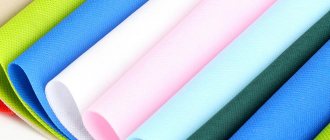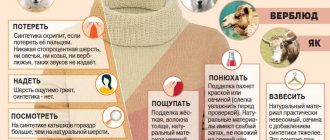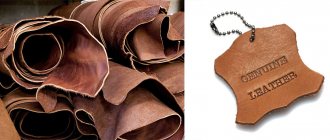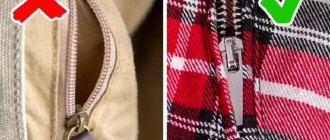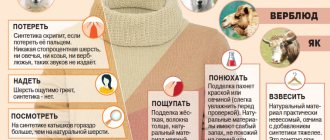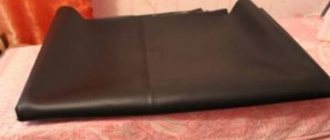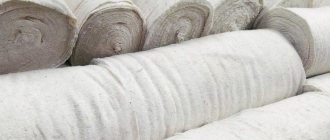Food plastic has long taken its place in the everyday life of citizens. People liked it because of its convenience, good shelf life and low cost. And while disputes rage between supporters of environmentally friendly materials and those who regularly use disposable plastic tableware, it is necessary to understand the different types of food polymers. After all, if you don’t learn how to do this, you can cause serious harm to your health.
The most popular substances used in the production of disposable tableware are polypropylene and polystyrene. What is the difference between them? Which one is more harmful?
On each plastic product, manufacturers put a marking standardized in all countries of the world , indicating the material from which it is made. These symbols can be found on the bottom of the product or on the packaging in which the product is wrapped. Externally, the marking is a triangle, inside of which there is a number, and below it are several letters indicating the substance.
Polypropylene
This is a substance that is formed during the polymerization of propylene . The procedure uses a catalyst to speed up the chemical reaction. For example, a Ziegler-Natta catalyst is often used. In general, the same parameters of substances are used to produce this plastic as in the production of polyethylene. And if you use different catalysts, you can get different types of polymer.
This is the substance from which most disposable food products are made, especially plastic cups. Its characteristic feature is its ability to withstand high temperatures. It is suitable for products whose temperature ranges between +4 and +100 degrees .
The standard marking for this type of plastic is a triangle , inside which is the number 5, and below it is the letter code PP. But manufacturers may remove some elements. Therefore, if there is only a number or letters at the bottom of a plastic product, then nothing changes.
Another advantage is the ability to heat food in dishes made from it (for example, bowls) in the microwave , as well as wash it in the dishwasher. That is, products made from polypropylene have consumer characteristics more similar to ordinary tableware.
However, food should not be stored in containers made of such plastic in the freezer. This type of polymer becomes brittle and cracks at subzero temperatures.
What to choose?
Polypropylene and polystyrene are complementary types of plastic . One is better suited for hot temperatures, the other for cold temperatures. It all depends on the purpose for which the plastic product will be used. Polystyrene plates are not suitable for hot barbecue, but they can be used for dishes that can be eaten cold.
It is not recommended to use disposable polypropylene cups for drinking alcoholic beverages. Together with alcohol, plastic reacts, resulting in the release of phenols, which are harmful to the body.
Thus, it is important to look at the labeling of a plastic product and relate it to the intended use. If the number 5 or the Latin letters PP are printed on the bottom, it is polypropylene, which is relatively safe. If the number 6 means PS, then this product cannot be used for hot dishes.
The manufacturer can also apply additional markings. For example, a snowflake means that the product can be safely frozen, and a shower means that it can be reheated.
But it’s better to give up plastic tableware , since all types of polymers are harmful to the environment.
Polystyrene
It is a polymer that is formed by chemically treating styrene . There are several types of this substance: emulsion (it has remained in history), suspension (used to create polystyrene foam) and block, which is the most common.
The material is marked with the number 6 and the letter PS . Able to withstand a wider temperature range, but cannot be used for making instant coffee or heating food in a microwave oven. The maximum temperature for which it is intended is 90 degrees . Also, such dishes cannot be washed in the dishwasher.
Polystyrene is a plastic analogue of glass , which, moreover, cannot break. Although it is designed for temperatures up to 90 degrees, if it is poured hot, it begins to release poisons into the water that can provoke the development of cancer cells. Also, when plastic is heated, harmful substances are released into the air, allowing them to enter the body through the lungs. Therefore, it is better to use polystyrene dishes for storing cold foods, including frozen ones. The minimum temperature at which food can be stored is -45 degrees.
This material is commonly used to make plastic plates. It is very rare to find a product made of polypropylene.
Types of plastic
An international marking was developed for sorting plastic, a triangle formed by arrows with a number inside. Under the triangle, instead of the number or together with it, the letter code of the plastic may be indicated. Plastic packaging is divided into 7 types.
Polycarbonate containers are durable plastic materials and are intended strictly for storing water, as they do not interact with it. However, if you constantly drink from dishes made of polycarbonate plastic, the content of bisphenol A in the body increases, but according to WHO, only very large doses of this substance are dangerous.
Polyethylene terephthalate PET(E) or PET is used to produce disposable bottles for water, soda and beer, cosmetic products, dairy products, and vegetable oils. The word “disposable” is not used in vain: the substance is safe only when used once.
High-density polyethylene PEHD (HDPE) or LDPE is used for the production of packaging bags, garbage bags, and milk packaging. When heated, it may release carcinogenic formaldehyde. This means that food in plastic bags cannot be heated in microwaves, as is often done at fast food chains.
Polyvinyl chloride V, PVC, or PVC, is increasingly used in food-grade plastics, but can be found in water bottles and food wraps. It is considered one of the most harmful types of plastic and emits many poisons.
What is the difference between polypropylene and polystyrene?
The main difference between these materials is the requirements for operating conditions . Polypropylene is best used for warm and hot products. It is safer when used to drink tea or eat soup.
Polystyrene is better suited for storing cold foods. For example, if someone decides to make homemade ice cream, then it needs to be placed in a polystyrene container.
Polypropylene is completely safe . Moreover, even products made from this substance can be used no more than once. Otherwise, harmful substances begin to be released: formaldehyde, calcium, lead and others. They are not contained in the plastic itself, but are used to make the disposable product stronger.
Which is correct?
The basic knowledge listed above will help keep you healthy. In addition, you should also follow a number of rules when dealing with plastic utensils, and it is better to completely abandon plastic in the kitchen. If you are not ready for such drastic measures, then first of all you need to get rid of store-bought packaging of products and store them in something else. If you use plastic utensils at home, then only for cold food and water, since when preparing coffee or soups, the water heats up to 100 ° C. And according to GOST, the utensils are tested at temperatures up to 75 ° C, which means: the tests were carried out in conditions softer than the real circumstances in the kitchen.
For cooking and hot food, you can only use fired dishes, the surface of which has become glazed and which has thereby become inert to food. Stainless steel and glass behave similarly passively.
NOT JUST LIGHTER - MORE RELIABLE AND STRONGER
The automotive industry can be considered a real testing ground for the testing and implementation of polymer materials. The desire to make a car safer, lighter, more beautiful and economical forces designers to constantly look for plastics to replace metal elements. The “stuffing” of a car consists of parts for various purposes, and their manufacture requires materials with different properties. For example, for a bumper, the most important thing is impact resistance, for a gasoline filter - resistance to fuel, and for rubbing parts - wear resistance. The number of plastic parts in cars is steadily increasing every decade. If in 1964 a foreign-made car contained on average 1-1.5% polymers (by weight), now in new cars plastic is already 15%. The Russian automotive industry is no exception; metal parts in domestic cars are increasingly being replaced by plastic ones. But for such a replacement to be truly effective and cost-effective, the necessary polymer materials must be quite cheap and always “at hand.” And this is only possible if they are produced here in Russia. It is to accomplish this task that the Moscow and Togliatti enterprises Kuibyshev-Azot and Visa joined forces and created the Volgaplast joint venture in Tolyatti, which produces polyamide-based polymer materials.
Share of polyamides in the world market of thermoplastic structural materials with a high degree of crystallinity. (Total production volume is 3.4 million tons.)
Share of polyamides in the Russian market of thermoplastic structural materials with a high degree of crystallinity.
Science and life // Illustrations
These automotive parts are made from polyamide-6 based materials.
Advantages of polyamide-6 over other plastics (polyacetal, polycarbonate, polybutylene terephthalate, ABS plastics).
Disadvantages of polyamide-6 compared to other plastics.
‹
›
We are used to saying that we live in the age of polymers. But polymers do not just replace traditional wood, glass, and metal, they surpass them in many ways. Polymers have become the basis for the creation of new structural materials with unique properties. The variety of existing synthetic polymers and composites allows, in each specific case, to select a material that best suits the functions that the product must perform and the conditions in which it will be used.
Strong positions in various industries, including the automotive industry, are occupied by polyamides - cheap, easy-to-process polymers with universal performance properties. A characteristic chemical feature of polyamides is that they contain a group - CO - NH - in the main chain. By the way, the same groups are found in proteins and peptides, although the properties of biological polyamides are very different from synthetic ones. The main industrially produced groups of polyamides are polyamide-6, polyamide-6,6 and polyamide-12; the numbers indicate the number of carbon atoms in the starting materials (monomers).
The first industrial polymer of this class, polyamide-6, better known to the general public as nylon, began its triumphal march around the world in the late 1930s, after a collaborator, the talented American chemist Wallace Carothers, developed a method for producing synthetic polyamide fiber. Products made from durable and elastic synthetic threads, from stockings and parachutes to fishing nets and ropes, quickly conquered the market.
Now polyamide is one of the cheapest and most widely used polymers. It can be used to make not only fiber, but also films, adhesives, and plastics. Polyamide plastics have remarkable properties: they are durable, resistant to mechanical wear, oils and organic solvents, withstand temperatures up to 140°C, and provide good thermal and electrical insulation. In addition, polyamides are perfectly compatible with a wide variety of fillers, and this opens up inexhaustible possibilities for creating composite materials and modified plastics with specified characteristics based on them. Fiberglass, asbestos, graphite, quartz, talc and other materials are used as fillers. The amount of filler, depending on the task, can reach up to 60%. Moreover, each type of filler gives the plastic special properties: glass fiber improves mechanical strength several times, graphite and molybdenum disulfide reduce the coefficient of friction, talc and quartz enhance electrical insulating properties, phosphorus and antimony compounds reduce flammability. Polyamide can be painted in any color, products made from it have a good appearance, which is important for competitiveness in the market.
A huge advantage of polyamide materials is their ease of processing. They are thermoplastic, which makes it possible to produce parts of various shapes using injection molding and extrusion. Compared to other polymers, polyamide is less capricious and is not so demanding on the accuracy of temperature conditions for casting and drying. For Russia, where technological processes in production have not yet been fully developed, such unpretentiousness is a great advantage. Moreover, the production of parts from polyamide thermoplastics is practically waste-free, since any remaining polymer mass will necessarily find a new use.
The raw material for the synthesis of polyamide-6 is a common chemical product - caprolactam. Since Russian chemical enterprises produce 10% of the world's caprolactam, it is clear that there are no problems with raw materials in our country. Most domestic factories produce polyamide-6 in the form of fiber, from which knitwear, fabrics, tire cord and much more are made. But for automobile parts, special modified injection molding grades of polyamide-6 are needed, the production of which in recent years, after the closure of the workshop in Orekhovo-Zuevo, has practically ceased in Russia.
To meet the needs of the domestic automotive industry and other industries for polyamide-based materials, the Volgaplast joint venture was created in Togliatti with the participation of the Kuibyshev-Azot and Visa enterprises. Volgaplast produces 5 thousand tons of products per year. Now domestic car factories are largely freed from the need to purchase imported polyamides, pay additional transportation costs and wait for the ordered batch of raw materials to arrive. And most importantly, you can get by with a fairly inexpensive domestic car without expensive imported materials. The production of polyamide plastics of the required grades is now located nearby - in Tolyatti.
A modern car structure is already unthinkable without polymer-based materials. It is enough to look under the hood of a car to see many parts made of plastic. If we talk specifically about polyamide, these are elements of ignition systems, thermostats, protective screens, gasoline and air filter housings, fan impellers and much, much more. Recently they started making exhaust manifold parts from polyamide, and they will also make valve covers. Some products made from Volgaplast materials, such as gasoline filters and relay frames made of transparent polyamide, will be exported to many countries around the world.
Polyamide was also used in the car interior: various buttons and frames, door handles, window housings and gears. In the near future, the metal accelerator pedal will be replaced by a lighter and stronger one - made of reinforced polyamide.
Of course, there are no ideal materials - polyamide also has disadvantages. One of them is the ability to absorb moisture. Because of this, high dimensional accuracy cannot be ensured in polyamide products: at high humidity, the part swells slightly, and shrinks again in dry air. But in many cases, the disadvantages of polyamide are offset by a complex of other consumer qualities that make it a universal plastic. And for special tasks there are special brands of polymers.
What are the benefits of using plastics in cars? Firstly, the car becomes lighter, which means that fuel consumption is reduced and environmental pollution from exhaust gases is reduced. Secondly, it opens up the possibility of new design solutions, since thermoplastic polymers are easy to process and therefore allow any design ideas to be realized. Thanks to this, it is possible to obtain parts of the most ingenious shapes and colors without additional machining and painting operations. Thirdly, the use of plastics helps not only to abandon expensive non-ferrous metals and stainless steels, but also to reduce energy and labor costs during the production process, and therefore reduce the cost of the car.
But perhaps the most important advantage of plastics is that they have a set of properties necessary for a specific structural element. And the reliability of the part and, ultimately, the safety of the car, as well as the comfort of the driver and passengers, depend on how well the material meets the operating conditions. Foreign experience shows that polyamide is the most suitable material for elements of the engine compartment. The combination of flexibility and rigidity, resistance to vibration, corrosion, abrasion, and cracking provide additional protection in the event of an accident.
Among the modified grades of polyamide, there are those that simultaneously have a low coefficient of friction, strength and impact strength. Moreover, these properties are maintained over a wide temperature range, which makes polyamide indispensable in the manufacture of bearing cages and other rubbing parts.
has developed a process for producing modified grades of polyamide for general purposes. The unique production of new materials of the Technamid B
. They have a shorter casting cycle. But saving even a few seconds allows you to produce more parts per shift and ultimately increases production efficiency. In addition, these materials are highly transparent, which significantly expands the range of their applications.
Now the Volgaplast enterprise has begun production of glass-filled materials of the Armamid
- trademark "Polyplastic-Technopol". These fiberglass plastics have improved performance qualities and, without a doubt, will find application in new series of cars, making them lighter, more beautiful and stronger.

